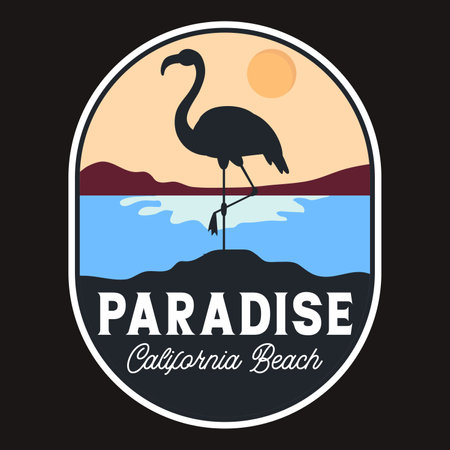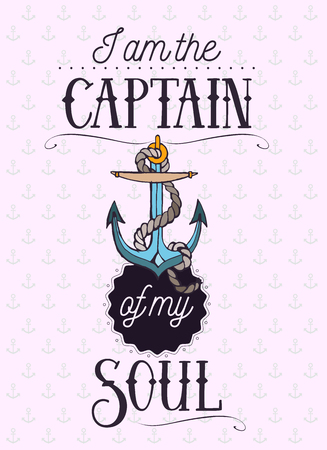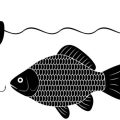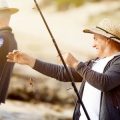Introduction to Gulf Coast Surf Fishing
When it comes to surf fishing, the Gulf Coast stands in a league of its own. Stretching from the sandy shores of Texas all the way to the Florida Panhandle, this region offers anglers a dynamic mix of rich marine life, stunning beaches, and year-round action. The Gulfs warm, fertile waters create a unique ecosystem where prized species like redfish, speckled trout, pompano, and flounder thrive just beyond the breakers. Unlike Atlantic or Pacific coasts, the Gulf is known for its gentle tides and relatively shallow surf zones, making it both accessible for beginners and challenging for seasoned pros. Popular hotspots such as Padre Island National Seashore in Texas, Grand Isle in Louisiana, Gulf Shores in Alabama, and Destin in Florida each offer their own local flavor and secrets—whether its hidden honey holes or tried-and-true bait choices passed down through generations. What truly sets Gulf Coast surf fishing apart is not just the variety of fish but also the culture: friendly locals swapping stories at sunrise, bait shops that double as community hubs, and a laid-back vibe that makes every cast feel like part of a long-standing tradition. Whether youre slinging cut bait for bull reds or sight-casting jigs to cruising pompano, surf fishing here is more than a hobby—its a way of life deeply rooted in coastal heritage.
2. Target Species: What’s Biting
When it comes to surf fishing the Gulf Coast, knowing what’s biting is half the battle. The region’s sandy shores and warm waters draw a wild cast of characters, but there are a few headliners every local angler keeps an eye out for. Here’s the hard-hitting breakdown on the top targets and how you can dial in your game to catch them.
Most Sought-After Gulf Surf Species
| Species | Peak Season | Bait Preferences | Local Secrets |
|---|---|---|---|
| Redfish (Red Drum) | Fall, Spring | Cut mullet, live shrimp, crab | Fish close to sandbars at dawn or dusk; look for mullet schools |
| Speckled Trout (Spotted Seatrout) | Late Spring through Summer | Live shrimp, soft plastics, croaker | Focus on early mornings after a tide shift; target troughs near grass beds |
| Pompano | Spring, Early Summer | Sand fleas (mole crabs), shrimp, small jigs | Toss into the first gut behind the breakers; use bright floats for visibility |
| Sharks (Blacktip, Bull) | Summer nights | Chunked baitfish, stingray wings | Paddle baits out past the third bar; fish heavy gear and always check regs |
The Gulf’s Seasonal Rhythm
If you want to hit it big, timing matters. Redfish get rowdy during fall runs when they school up near passes and jetties—prime time for surf casters with stout gear. Speckled trout bite best when water temps rise, especially around sunrise. Pompano prefer slightly warmer spring currents and are notorious for cruising right in the wash. As for sharks, summer brings them in droves after dark—just remember to handle with care and respect local laws.
Bait Selection: Local Wisdom
The Gulf Coast angler’s mantra? Match your bait to what’s naturally running in the surf. If you see finger mullet flipping in the shallows, that’s your go-to for redfish. For pompano, nothing beats fresh-dug sand fleas from just under your feet. Don’t be afraid to switch things up—sometimes even the old-timers get surprised by what’ll trigger a bite on any given day.

3. Essential Gear and Tackle
If you want to dominate the surf on the Gulf Coast, your gear needs to be dialed in, no excuses. Let’s cut through the fluff—here’s what works for serious anglers putting lines in the sand from Texas to Florida.
Rods: Reach and Backbone
You’re looking at 10- to 12-foot surf rods for most Gulf beaches. The extra length lets you sling bait over the breakers where pompano, redfish, and speckled trout cruise. Go for a medium-heavy action; you need backbone to muscle big reds out of the wash without snapping off. Don’t cheap out here—the Gulf wind and salt will chew up bargain-bin sticks fast.
Reels: Built Tough for Salt
Pair your rod with a size 5000–8000 spinning reel, sealed against saltwater intrusion. Look for strong drag systems—you’ll thank yourself when a bull red or jack crevalle takes off down the beach. Penn, Shimano, and Daiwa reels are local favorites because they last season after season under Gulf conditions.
Lines: Strength Meets Stealth
Braid is king on the Gulf Coast, usually in the 20- to 40-pound range. Braid slices through wind and current, giving you more sensitivity for detecting light bites from whiting or flounder. Always use a fluorocarbon leader (20–30 lb) to keep wary fish from spooking in clear water. Local sharpies tie their leaders with improved clinch or uni knots—don’t overthink it.
Bait: What Locals Know
The best bait? Whatever’s swimming in the surf right now. Live shrimp is the gold standard year-round, but sand fleas (mole crabs) are deadly on pompano in spring and summer. Cut mullet or menhaden pulls in big reds and sharks. Frozen squid gets bonus points for staying on the hook when pinfish are thick. Pro tip: hit local tackle shops early—they sell out of fresh bait fast during weekend runs.
Terminal Tackle and Extras
Pyramid sinkers (2–4 oz.) hold bottom in shifting Gulf currents, while double-drop rigs with circle hooks (size 1/0–3/0) let you cover multiple species at once. Bring sand spikes to keep your rods secure between hits, and always pack a pair of pliers and a bait knife—Gulf fish don’t give second chances.
Real Talk from the Sand
The right setup means more hookups and fewer headaches when that trophy fish finally hits. Invest in quality gear, match your tackle to the local bite, and be ready—on the Gulf Coast, every cast could be the one that bends your rod double.
4. Winning Strategies and Tactics
If you want to outfish the crowds on the Gulf Coast, you need more than luck—you need a toolbox of hardcore surf fishing strategies that locals swear by. Here’s how the pros separate themselves from tourists, one cast at a time.
Reading Sandbars Like a Native
The key to unlocking Gulf surf action is knowing where the fish hold. The real players watch for sandbars and cuts—those troughs and deeper channels between bars. Early morning low tide? That’s prime time to spot these features before they’re hidden by high water. Target the edges of sandbars and the mouths of cuts, especially when bait schools push in close.
Tide Timing: The Bite Window
No Gulf angler ignores the tides. Fish get fired up an hour before and after high tide, especially if it coincides with sunrise or sunset. Slack tides are often dead zones; moving water triggers strikes as predators ambush bait caught in the flow. Pro tip: Keep a local tide chart handy, not just a generic app—Gulf beaches can vary by several hours even within the same county.
Casting Distance: Go Long or Go Home
Most tourists lob their rigs just past the first wave, but experienced anglers know that sometimes you need to bomb it out 75-100 yards to reach deeper guts where reds and pompano patrol. Use a long surf rod (10-12 ft), a streamlined sinker, and braid line for max distance without sacrificing sensitivity.
Essential Gear Hacks
| Hack | Pro Tip |
|---|---|
| Double Drop Rigs | Let you present two baits at different depths; use small floats to keep bait off snaggy bottoms. |
| Sand Spike Mods | Add PVC extensions or angle them into the wind for rock-solid rod support during big hits. |
| Tackle Prep | Pre-tie leaders with varying hook sizes—swap fast when target species change with the tide. |
| Bucket Organization | Use five-gallon buckets with insert trays—keeps pliers, extra rigs, and bait accessible while moving down the beach. |
Dialing In Your Presentation
Think like a predator: match your bait (shrimp, cut mullet, Fishbites) to what’s running locally. Keep hooks sharp and leaders light for spooky fish like pompano. Cast at angles instead of straight out to cover more ground and intercept cruising schools.
With these hard-earned tactics, you’ll be landing Gulf giants while others are still untangling their lines or asking locals what’s biting. This is surf fishing the way real Gulf anglers do it—gritty, tactical, and always ready for that next monster run.
5. Local Secrets and Etiquette
Inside Tips from Gulf Coast Anglers
If you want to fish like a local on the Gulf Coast, you need more than just the right tackle—you need street smarts learned from years of salty experience. Here’s how to fish smarter, not harder.
Secret Honey Holes
The best surf fishing spots aren’t marked on any map. Talk to bait shop owners early in the morning—they’ll drop hints if you’re friendly. Look for sandbars near river mouths or jetties at sunrise; these areas funnel baitfish and attract hungry predators. Veteran anglers swear by the east end of Dauphin Island at dawn and stretches of Texas’ Bolivar Peninsula after a storm clears out the crowds.
Scoring Live Bait Like a Pro
Forget overpriced convenience store shrimp—locals net their own bait at first light. Toss a cast net into the trough behind the breaking waves for finger mullet or menhaden. Can’t throw a net? Hit up pier anglers as they’re packing up; they’ll often part with leftover live shrimp for cheap. Remember: fresh bait out-fishes frozen every time on the Gulf.
Beach Etiquette You’d Better Know
Space is gold on a busy shoreline. Give fellow anglers at least 30 feet—more if they’re slinging heavy gear for bull reds. Keep your rod holders close and your lines tight; no one likes tangled rigs when the bite is hot. Clean up your trash and fill in your holes—locals have zero tolerance for disrespecting their beaches.
Avoiding Rookie Mistakes
Don’t set up right where families swim, and always check for local regulations—some beaches require special permits or restrict certain rigs. Watch the tides: locals know outgoing tide pushes baitfish (and gamefish) closer to shore, so plan your sessions accordingly. And above all, keep it low-key; nothing ruins a honey hole faster than broadcasting it on social media.
Tight Lines, Southern Style
Blend in, respect local customs, and fish smart—before long, you’ll be pulling slabs from the surf just like a Gulf Coast native.
6. When and Where: Best Times and Hotspots
Timing is Everything: Seasons and Tides
If you want to hook into the Gulf Coast’s best surf fishing, timing your outings is non-negotiable. Spring and fall are prime—think March through May, then again from September to early November. Water temperatures are perfect for species like pompano, speckled trout, and redfish cruising the surf zone. Early morning (sunrise to 10am) or late afternoon (after 4pm until dusk) are golden hours, especially when paired with an incoming tide. Full moons can spark feeding frenzies, but don’t sleep on the dark new moons when big fish come closer in search of easy meals.
Can’t-Miss Locations from Texas to Florida
Texas Hotspots:
Padre Island National Seashore is legendary—miles of untouched beach holding specks, bull reds, and sharks. The Bolivar Peninsula near Galveston produces serious trout runs in spring. Don’t overlook Mustang Island for its deep troughs just off the sandbar.
Louisiana Gems:
Grand Isle is a classic—hit Elmer’s Island at dawn for flounder and slot reds. The beaches near Holly Beach have less pressure and surprise runs of black drum and sheepshead.
Mississippi & Alabama Action:
Waveland Beach gives up solid whiting and the occasional tripletail if you know where to look. In Alabama, Dauphin Island’s west end offers monster reds during fall migrations.
Pensacola & Florida Panhandle:
Pensacola Beach Pier area gets crowded, so slide down to Fort Pickens or Navarre Beach for pompano and Spanish mackerel blitzes—especially after a southeast wind stirs things up. Destin’s East Pass has a reputation for trophy catches during mullet runs.
Dodging Crowds: Local Secrets
The real trick? Avoid weekends when the crowds roll in. Go midweek, hit lesser-known access points, and walk farther than most folks are willing to trek from parking lots—sometimes an extra 10-minute walk means you’ll have a stretch of sand all to yourself. Fish right after storms pass; churned-up water brings gamefish close in while keeping fairweather anglers home. And always keep an eye out for baitfish schools—where there’s bait, predators aren’t far behind.
Pro Tip:
Never underestimate the power of local intel—chat up tackle shop owners or hit online forums for recent bite reports before you go. With the right timing and hotspot strategy dialed in, the Gulf Coast’s surf will hand you unforgettable action every season.


